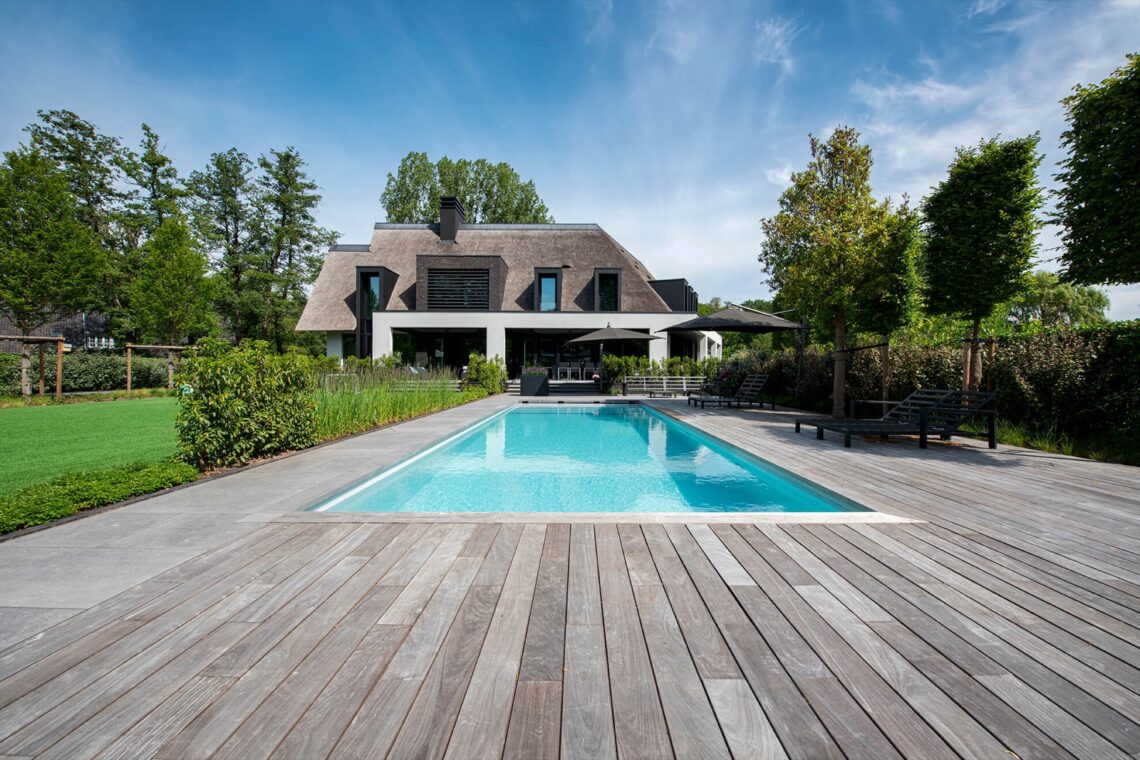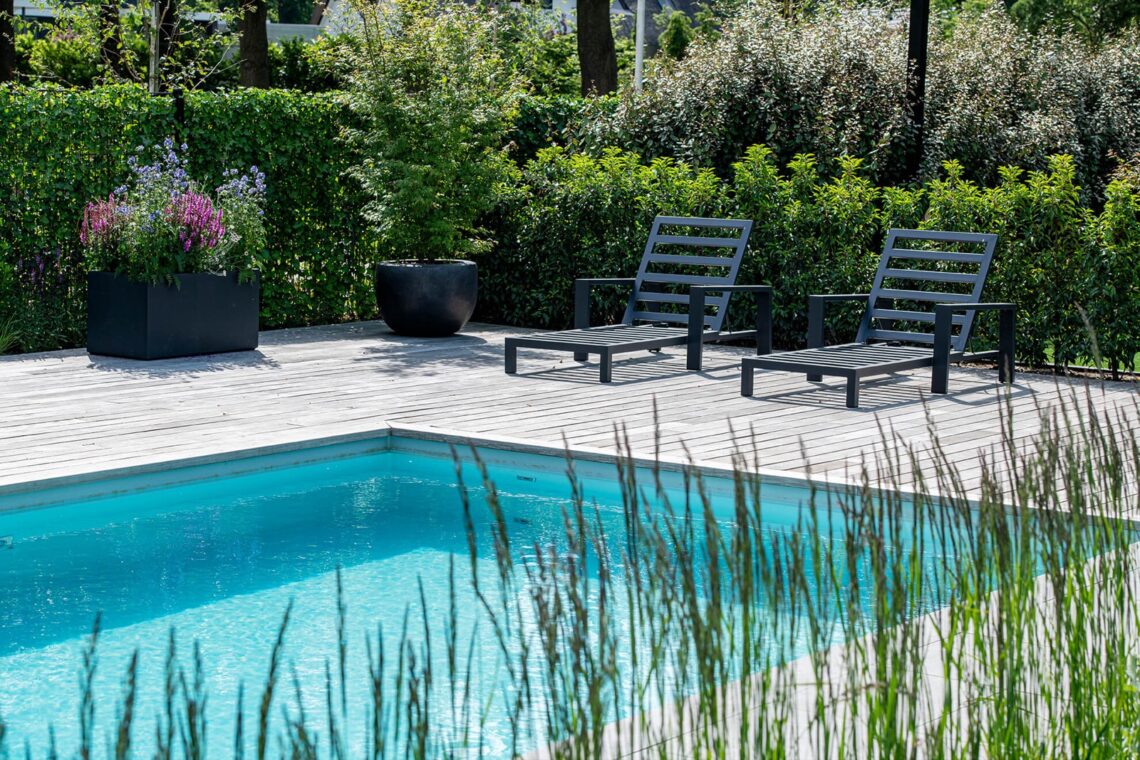How durable is a wood deck?

A question frequently asked in the search for decking or siding. We understand that like no other. We can supply a Tablazz outdoor wood parquet in Tropical hardwood or Thermo Ash. These are 2 types of wood used as an application for outdoor parquet or siding. Each has its own sustainability. We distinguish sustainability in 2 ways: material longevity and environmental taxability.
Durability classes
When we talk about durability in the sense of the longevity of the material, with wood we speak of a number of durability classes. All wood species are divided into 5 durability classes from 1 to 5 with 1 being the most durable class and 5 being the least durable. Only the first 3 are suitable for outdoor applications.
Class 1 wood is the very best
If the wood falls into Class 1, it will last 25 years or more, and this is the very best wood for outdoor applications. The more durable the wood, the denser and harder the structure and the less moisture it absorbs. This, of course, lends itself perfectly to processing as decking or cladding where the material continuously faces changing weather conditions.
So it is important to pay attention to this durability class when choosing material as an outdoor application. Only wood from class 1 to 3 is suitable for outdoor use. Class 1 wood is the very best and has the longest life and this is exactly the wood we offer for outdoor parquet and siding. These include Ipe, Ayous, Padouk, Teak or Thermally Modified Ash.
Sustainability in the climate sense
In addition to material longevity, the carbon footprint is becoming increasingly important. We only have 1 earth and we want to treat it carefully. This realization is beginning to sink in more and more among our customers. There is increasing demand for sustainable solutions for exterior parquet or siding. What about that in relation to our materials? Is our outdoor parquet durable, or not? We take you through our story!
It is important to emphasize that wood has great advantages as a circular and climate-friendly material. The condition, however, is that it comes from responsibly managed forests. Basically, we always do this. The forests our wood comes from are not burned down (note; burned so not used) for palm oil or soy plantation. This is the biggest threat to the environment.

Wood is always a good choice
Our wood is a circular and climate-friendly material. It comes from a sustainably managed forest, and sustainably managed forests contribute to a good living environment on earth. A sustainably managed forest is capable of absorbing large amounts of CO2 which can reduce emissions, one of the climate goals of many countries including the Netherlands. Wood is also an inexhaustible resource because new trees are always growing. Sustainably managed forests must not be cut down for palm oil plantation, cattle ranching or mining area. Finally, every fiber of the tree is fully usable and biodegradable. There is no annoying residual waste that needs to be chemically incinerated or cannot be processed.
Choose thermally modified
An interesting alternative if you choose to reduce your ecological footprint is to use Thermally Modified Wood. This is originally soft and fragile wood made extremely durable by thermal treatment. This heating is done only with steam, no chemicals are involved! This makes the durability and moisture resistance equivalent to that of tropical hardwood.
This wood comes from fast-growing trees from sustainably managed forests in Europe. So the wood does not have to travel as far and the trees grow back faster. It answers the growing demand for sustainable and environmentally friendly products.
Rainwater back into the ground instead of into the sewer system
Finally, a great advantage of a wooden deck is that excess rainwater can run right into the ground. With tiles, the water cannot get away and it all flows into the sewer where it must be processed again. This is less good for the environment. For one thing, this water has to be processed and that costs energy; on the other hand, you have to use extra water to feed the soil and that also costs energy. So an outdoor parquet where rainwater can drain away into the ground is always the best choice for the environment in that regard.
So, in short, to the question of whether outdoor parquet is durable, we can answer a resounding YES. The wood we use for our outdoor applications is first of all incredibly durable in terms of its lifespan, and secondly, the use of wood is incredibly good for the environment because it can be used from a to z and a new tree is always planted in return.
Back to blog



